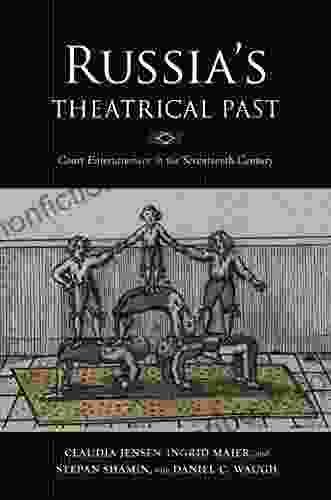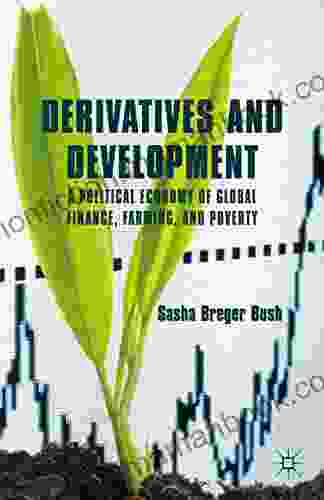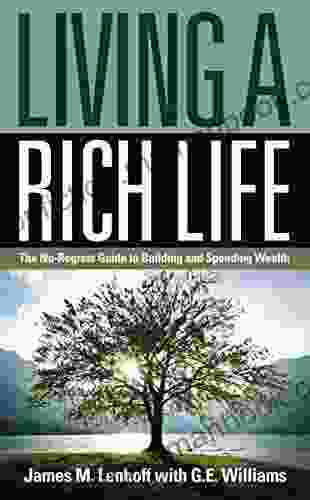Methodology of the Heart: A Comprehensive Exploration into the Workings of the Human Heart

The human heart is a remarkable organ, responsible for pumping blood throughout the body, delivering essential oxygen and nutrients to every cell. Its function relies on a complex system of electrical impulses, mechanical contractions, and intricate anatomical structures. Understanding the methodology of the heart is crucial for deciphering its vital role in maintaining life.
4.8 out of 5
| Language | : | English |
| File size | : | 1196 KB |
| Text-to-Speech | : | Enabled |
| Screen Reader | : | Supported |
| Enhanced typesetting | : | Enabled |
| Word Wise | : | Enabled |
| Print length | : | 182 pages |
| Paperback | : | 28 pages |
| Item Weight | : | 3.06 ounces |
| Dimensions | : | 7.87 x 5.51 x 1.57 inches |
The Electrical System of the Heart
The heart's electrical system governs the rhythmic contractions that propel blood flow. It consists of specialized cells known as the sinoatrial (SA) node, atrioventricular (AV) node, and Purkinje fibers:
- Sinoatrial (SA) Node: Located in the right atrium, the SA node acts as the heart's natural pacemaker, generating electrical impulses that initiate each heartbeat.
- Atrioventricular (AV) Node: Situated between the atria and ventricles, the AV node delays the electrical signal slightly, allowing the atria to fill before the ventricles contract.
- Purkinje Fibers: These specialized muscle fibers carry the electrical impulses rapidly throughout the ventricles, ensuring synchronous contraction of the heart chambers.
These components work in harmony to create the characteristic electrical signals detected in an electrocardiogram (ECG),a non-invasive test that provides valuable insights into the heart's electrical activity.
The Cardiac Cycle
The cardiac cycle refers to the sequential events that occur during a single heartbeat. It consists of two main phases:
- Systole: The contraction phase, during which the heart pumps blood out of the ventricles into the body.
- Diastole: The relaxation phase, when the heart fills with blood from the atria.
The cardiac cycle is meticulously regulated by the electrical system and influenced by factors such as heart rate, blood volume, and autonomic nervous system activity.
Heart Valves and Blood Flow
Within the heart, four valves control the flow of blood. These valves ensure proper circulation and prevent backflow:
- Tricuspid Valve: Separates the right atrium from the right ventricle
- Pulmonary Valve: Located between the right ventricle and pulmonary artery
- Mitral Valve (Bicuspid Valve): Divides the left atrium and left ventricle
- Aortic Valve: Situated at the exit of the left ventricle into the aorta
When the heart contracts, the valves open to allow blood flow. During relaxation, they close to prevent backflow into the heart chambers.
Heart Anatomy and Physiology
The heart's anatomy reflects its complex functionality. It consists of four chambers:
- Right Atrium: Receives blood from the body
- Right Ventricle: Pumps blood to the lungs for oxygenation
- Left Atrium: Receives oxygenated blood from the lungs
- Left Ventricle: Pumps oxygenated blood to the body
The heart is composed of cardiac muscle tissue, known as myocardium. Its structure and thickness vary depending on the chamber's function. The heart is surrounded by the pericardium, a protective sac that reduces friction during contractions.
Factors Influencing Heart Function
The heart's function is influenced by numerous factors:
- Cardiac Output: The volume of blood pumped by the heart per minute, influenced by heart rate, stroke volume (amount of blood ejected with each heartbeat),and preload (volume of blood filling the heart before contraction)
- Heart Rate: The number of times the heart beats per minute, regulated by the autonomic nervous system and hormones
- Myocardial Contractility: The strength of the heart's contractions, affected by factors such as calcium levels and cardiac hormones
- Blood Volume: The amount of blood in circulation, influencing the heart's filling and pumping ability
- Vascular Resistance: The resistance to blood flow in the blood vessels, affecting the heart's workload
Understanding these factors is essential for evaluating overall heart health and identifying potential issues.
Clinical Implications
Understanding the methodology of the heart is crucial for diagnosing and treating cardiovascular conditions:
- Arrhythmias: Abnormalities in the heart's electrical system, leading to irregular heartbeats
- Valvular Heart Disease: Dysfunction of the heart valves, causing impaired blood flow
- Coronary Artery Disease: Narrowing or blockage of the coronary arteries, reducing blood supply to the heart
- Heart Failure: The heart's inability to pump blood effectively, leading to fluid accumulation and organ dysfunction
Various diagnostic techniques, such as echocardiography, cardiac stress tests, and cardiac catheterization, are employed to assess heart function and identify abnormalities.
The methodology of the heart is a captivating and multifaceted field that elucidates the remarkable workings of this vital organ. Understanding the electrical system, cardiac cycle, heart anatomy, and influencing factors empowers us with the knowledge to appreciate its intricate mechanisms. This understanding forms the foundation for diagnosing and treating cardiovascular conditions, promoting heart health, and preserving this precious life-sustaining force within us.
4.8 out of 5
| Language | : | English |
| File size | : | 1196 KB |
| Text-to-Speech | : | Enabled |
| Screen Reader | : | Supported |
| Enhanced typesetting | : | Enabled |
| Word Wise | : | Enabled |
| Print length | : | 182 pages |
| Paperback | : | 28 pages |
| Item Weight | : | 3.06 ounces |
| Dimensions | : | 7.87 x 5.51 x 1.57 inches |
Do you want to contribute by writing guest posts on this blog?
Please contact us and send us a resume of previous articles that you have written.
 Top Book
Top Book Novel
Novel Fiction
Fiction Nonfiction
Nonfiction Literature
Literature Paperback
Paperback Hardcover
Hardcover E-book
E-book Audiobook
Audiobook Bestseller
Bestseller Classic
Classic Mystery
Mystery Thriller
Thriller Romance
Romance Fantasy
Fantasy Science Fiction
Science Fiction Biography
Biography Memoir
Memoir Autobiography
Autobiography Poetry
Poetry Drama
Drama Historical Fiction
Historical Fiction Self-help
Self-help Young Adult
Young Adult Childrens Books
Childrens Books Graphic Novel
Graphic Novel Anthology
Anthology Series
Series Encyclopedia
Encyclopedia Reference
Reference Guidebook
Guidebook Textbook
Textbook Workbook
Workbook Journal
Journal Diary
Diary Manuscript
Manuscript Folio
Folio Pulp Fiction
Pulp Fiction Short Stories
Short Stories Fairy Tales
Fairy Tales Fables
Fables Mythology
Mythology Philosophy
Philosophy Religion
Religion Spirituality
Spirituality Essays
Essays Critique
Critique Commentary
Commentary Glossary
Glossary Bibliography
Bibliography Index
Index Table of Contents
Table of Contents Preface
Preface Introduction
Introduction Foreword
Foreword Afterword
Afterword Appendices
Appendices Annotations
Annotations Footnotes
Footnotes Epilogue
Epilogue Prologue
Prologue Mikhail Bulgakov
Mikhail Bulgakov Margo Jefferson
Margo Jefferson Victoriano Garza
Victoriano Garza Sofia Aves
Sofia Aves True Kelley
True Kelley Caitlin Kelly
Caitlin Kelly Sarah Bower
Sarah Bower Andy Bull
Andy Bull Harold Schechter
Harold Schechter Erin Arvedlund
Erin Arvedlund Bobby Adair
Bobby Adair Richard Lemarchand
Richard Lemarchand Laurence M Ball
Laurence M Ball Joseph N Cooper
Joseph N Cooper Chris Bailey
Chris Bailey Merwan Mehta
Merwan Mehta Robert F Kennedy Jr
Robert F Kennedy Jr Paul Moxham
Paul Moxham Brenda Hillman
Brenda Hillman Michael Morpurgo
Michael Morpurgo
Light bulbAdvertise smarter! Our strategic ad space ensures maximum exposure. Reserve your spot today!

 Chuck MitchellThe World of Otome Games Is Tough for Mobs Vol. 1: A Generic Mob in a Fantasy...
Chuck MitchellThe World of Otome Games Is Tough for Mobs Vol. 1: A Generic Mob in a Fantasy...
 Christian CarterThe Union Leah Vernon: A Thorough Exploration of the Controversial Figure
Christian CarterThe Union Leah Vernon: A Thorough Exploration of the Controversial Figure Raymond ChandlerFollow ·14k
Raymond ChandlerFollow ·14k Allan JamesFollow ·12.4k
Allan JamesFollow ·12.4k Pablo NerudaFollow ·16.6k
Pablo NerudaFollow ·16.6k Hector BlairFollow ·13.3k
Hector BlairFollow ·13.3k Clarence BrooksFollow ·2.3k
Clarence BrooksFollow ·2.3k Ira CoxFollow ·2.3k
Ira CoxFollow ·2.3k Warren BellFollow ·9.9k
Warren BellFollow ·9.9k Isaac AsimovFollow ·6.5k
Isaac AsimovFollow ·6.5k

 Steve Carter
Steve CarterUnveiling the Rich Theatrical Tapestry of Russia: A...
Origins and Early...

 Frank Butler
Frank ButlerOn Talking Terms With Dogs: Calming Signals and the...
For centuries, dogs have...

 Leo Tolstoy
Leo TolstoyThe Inside Guide to Applying and Succeeding in...
Applying to...

 Cole Powell
Cole PowellThe Political Economy of Global Finance, Farming and...
The global...
4.8 out of 5
| Language | : | English |
| File size | : | 1196 KB |
| Text-to-Speech | : | Enabled |
| Screen Reader | : | Supported |
| Enhanced typesetting | : | Enabled |
| Word Wise | : | Enabled |
| Print length | : | 182 pages |
| Paperback | : | 28 pages |
| Item Weight | : | 3.06 ounces |
| Dimensions | : | 7.87 x 5.51 x 1.57 inches |












